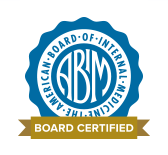Keep Yourself Protected From Measles Outbreaks
Why is Measles Important?
Measles virus is a highly contagious airborne virus that spreads through the air even after the patient has departed and/or is not even symptomatic with a rash yet. Measles outbreaks still occur in the United States where patients can have severe complications. Approximately 9 out of 10 non-immune persons will develop measles upon exposure. The best ways to prevent measles transmission are timely vaccinations and quick reporting to Public Health
Communicability
- Infectious 4 days before to 4 days after rash onset.
- Secondary attack rate: >90% among non-immune persons
Post exposure Prophylaxis Administration of MMR or IG to exposed contacts depends upon time of exposure and contact’s age and risk status.
Fact Sheet for Clinicians Measles (Rubeola) Symptoms Prodome Symptoms:
- Begins with a mild to moderate fever
- Accompanied by cough, coryza, and conjunctivitis – the 3 “C’s After:
- Fever spikes – often ≥104⁰F
- At same time, maculopapular rash appears – starts 2-4 days after prodrome and typically begins at the hairline and progresses downward and outward Usual Rash Progression: First appears on face, along hairline and behind ears. Then spreads downward to the rest of the body. Symptoms can vary in presentation and timing if patient is immunocompromised and/or has been vaccinated. Testing Laboratory confirmation is essential.
If measles is suspected perform the following:
- PCR: Throat swab & urine sample
- IgM and IgG serology See Lab Testing below Clinical Presentation Consider measles in patients of any age who have febrile rash.
Treatment There is no specific antiviral therapy for measles.
Prevention:
- Best prevention is timely vaccinations.
See vaccine schedule:
- Persons with measles must remain isolated for 4 days after rash onset.
Symptoms Prodome Symptoms:
- Begins with a mild to moderate fever
- Accompanied by cough, coryza, and conjunctivitis – the 3 “C’s After:
- Fever spikes – often ≥104⁰F
- At same time, maculopapular rash appears – starts 2-4 days after prodrome and typically begins at the hairline and progresses downward and outward Usual Rash
Progression:
First appears on face, along hairline and behind ears. Then spreads downward to the rest of the body. Symptoms can vary in presentation and timing if patient is immunocompromised and/or has been vaccinated.
Complications:
- Otitis media, bronchopneumonia, dehydration, convulsions, laryngotracheobronchitis and diarrhea.
- Subacute sclerosing panencephalitis (SSPE) is a rare but fatal degenerative disease develops 7-10 years after measles infection.
Suspect Measles if any of the following exist:
- Patient presents with acute febrile rash or
- Positive measles IgM antibody result or
- Symptomatic patient indicates a recent measles exposure, especially while traveling internationally.
Consider the following when determining if patient has measles:
- MMR vaccines are not up-to-date
- Immune-compromised at time of exposure to measles
Laboratory Testing Timing of specimen collection in relation to clinical presentation is important to yield reliable results. Do not test asymptomatic patients.
Table 1: Laboratory Tests for Measles Diagnosis Test Timing of specimen collection Serology IgM / IgG
- Test for IgM at least 72 hours after rash onset . False negative IgM results can occur if serum is collected earlier than 72 hours after rash onset
- Collect 7-10ml in gold top serum separator tube Throat Swab for PCR
- Obtain ideally within 3 days of rash onset with sterile synthetic swab
- Place swab into liquid viral or universal transport medium Urine for PCR
- Collect 10- 50 ml midstream, cleancatch (first morning void preferred) For more details: https://www.cdc.gov/measles/lab-tools/ Fact Sheet for Clinicians: Measles COM-PR-PER-V4 (03/22/18)
Treatment There’s no specific antiviral agent available. Children who are hospitalized, should be treated with vitamin A. https://www.cdc.gov/measles/hcp/index.html.
Questions
- Call the Los Angeles County Department of Public Health Vaccine Preventable Disease Control Program at 8:30 AM– 5:00 PM Monday-Friday: (213) 351-7800 and ask to speak to the Epidemiologist on duty. After business hours, weekends, holidays: Call
(213) 974-1234, Option 8 Administrative Officer on Duty - http://publichealth.lacounty.gov/ip/VPDmeasles.htm Prevention Vaccination is the best way to prevent measles.
- Patients suspected to have measles should be isolated from non-immune persons
- To determine if a person is immune to measles without documented proof of receipt of MMR doses, collect serum for measles IgG testing.
- Measles virus can remain infectious in the air for up to two hours after an infected person leaves an area.
- Two doses of MMR are ~97% effective
Postexposure Prophylaxis (PEP) MMR vaccine for PEP MMR: Administered ≤ 3 days of first exposure. Giving MMR after the recommended timeframe may not protect against the current measles exposure.
- Only for persons ≥ 6 months of age with one or no documented doses of MMR and for anyone whom vaccine is not contraindicated
- MMR should not be given for at least 6 months after the administration of IGIM or 8 months after IGIV. Immune globulin (IG) for PEP IG: Administered ≤ 6 days of first exposure
- Only for persons known to be at risk of developing complications regardless of prior measles vaccination: o Infants

